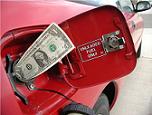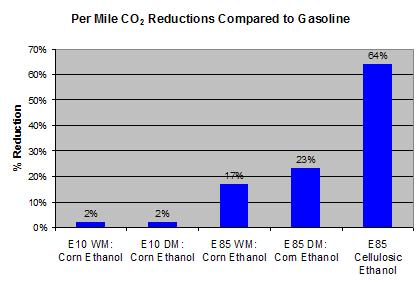What do you mean my car won't run on ethanol??
 That's right, not every vehicle is able to run on pure ethanol,
in fact most vehicles can only run on a blend known as E10. Here we look at
different fuels and how they stack up environmentally.
That's right, not every vehicle is able to run on pure ethanol,
in fact most vehicles can only run on a blend known as E10. Here we look at
different fuels and how they stack up environmentally.
You may have seen it at gas stations, small labels stating "this gasoline may contain up to 10% ethanol", or at an auto show where a car manufacturer boasts that their vehicle is capable of running on E85. Unfortunately there seems to have been little effort made to actually explain these changes to consumers. In 2006, The US Department of Energy found that 69% of Americans didn't know anything about E85, and of those that did, more were likely to view it negatively than positively [11].
E85 is simply a blend of gasoline and ethanol that is 85% ethanol by volume and E10 is, similarly, a blend that is 10% ethanol by volume. What difference will using E85 or E10 have on your drive, the environment and perhaps most importantly, on your car itself?
Technically, what is the difference between a vehicle that is capable of using E85 and one that is not? Well, since ethanol is corrosive, many parts of your engine have to be replaced with components that will not be damaged by it [12]. For example, your gasoline tank will be made of stainless steel and the fuel hoses will be lined with Teflon. For this reason, it is recommended that vehicles not built to use E85 avoid filling up on it, however all vehicles can still use gasoline that contain up to 10% ethanol [12].
Curious about how E85 may affect your bottom line? Check out the US Department of Energy's E85 calculator!
The Environment Factor
Environmentally E10 has been shown to have mixed benefits when compared to gasoline per mile. It has been shown to reduce CO2 emissions by less than 2%, although reductions in other chemicals is more pronounced [5]. Naturally, a higher percentage of ethanol leads to larger reductions in CO2 emissions, for E85 it is estimated to be between 17% and 23% depending on whether the dry mill or wet mill processes have been used [5]. But you may find your tank running on empty a lot quicker if you have filled up on any of these ethanol blends. Since ethanol produces less energy than gasoline when burned it requires more ethanol to travel the same distance as gasoline. On the plus side though, since ethanol is an oxygenate, E10 and E85 have higher octane ratings than regular gasoline [13].
|
|
So, how much do you really know about Ethanol now? Why not find out ...
